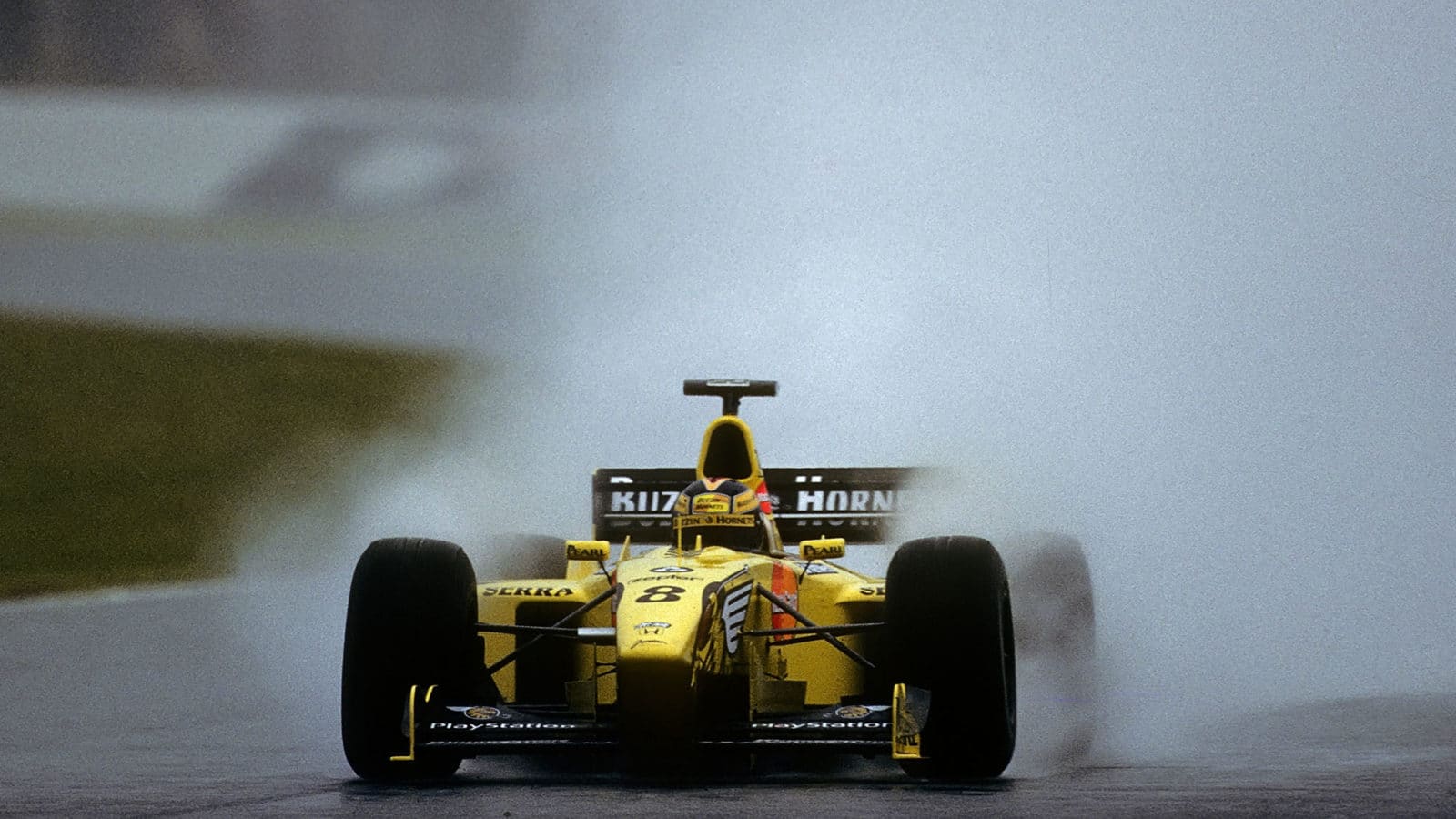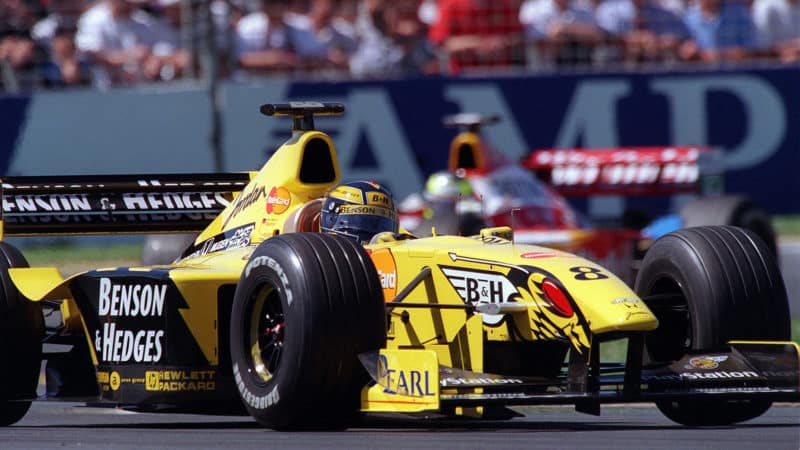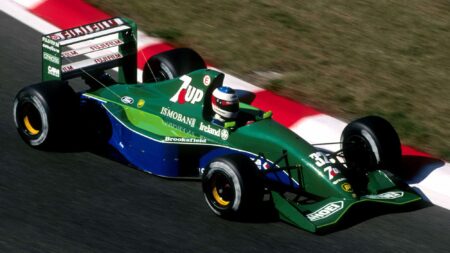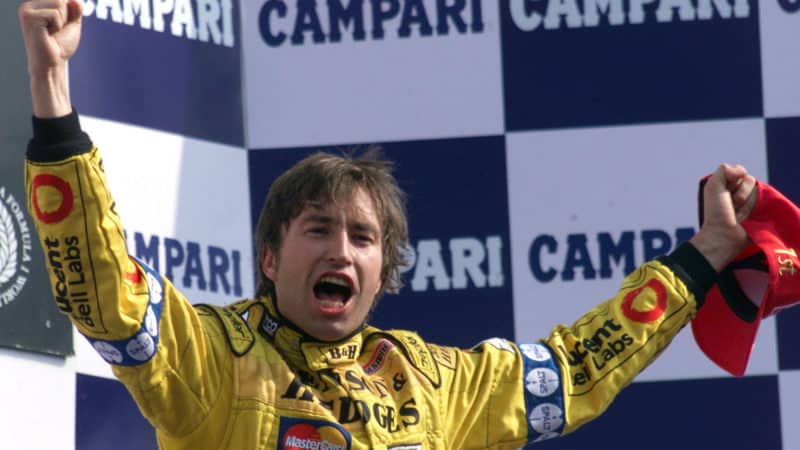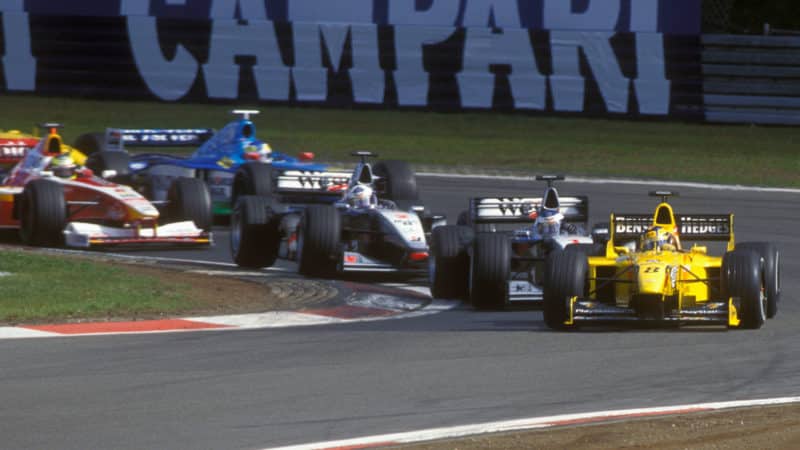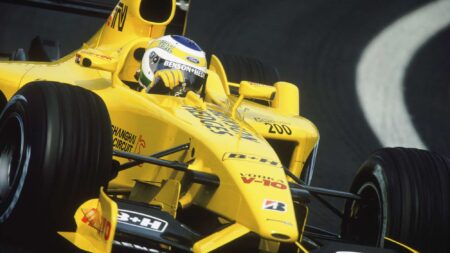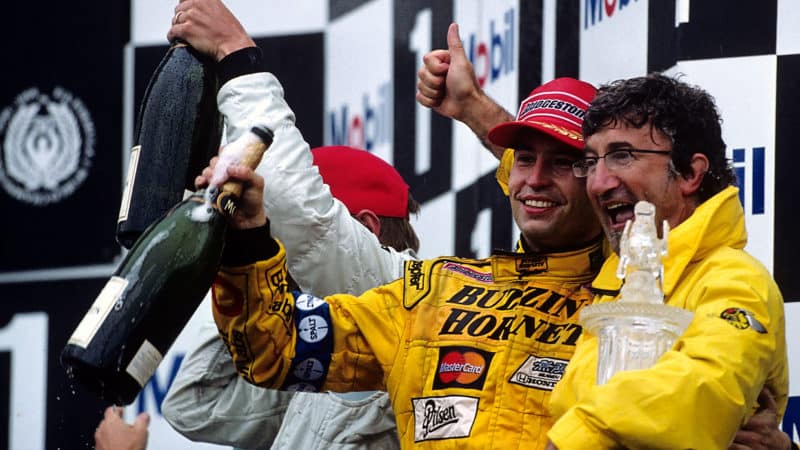“Heinz had fresh motivation because he’d been removed from a top team,” says Michael. “He was out to prove himself. That year there was only Bridgestone supplying tyres, so we all had a hard control compound. The tyres had low degradation — it meant that the most important part of a stint was towards the end.
“From his sportscar days Heinz was good at saving fuel and using the tyres in the last seven or eight laps before the pitstop. He would control the pace and save the tyres as much as he could. We also had a slightly bigger fuel tank than anyone else, probably by about 10kg. So we could always run three or four laps longer.”
Aware that Hill was losing interest, Heinz-Harald seized the initiative and soon got the team on his side. The season started strongly in Melbourne, where he finished second to Ferrari’s Eddie Irvine, although problems for Michael Schumacher and the McLarens helped. In Brazil H-HF finished third, only to run out of fuel on the slowing-down lap. In theory he did not have enough left in the tank to satisfy the FIA checks, but no exclusion followed.
At Imola he went off on oil, but made amends with a good fourth at Monaco. In Spain he retired with a transmission problem while fifth, and then in Canada he had a spectacular crash after a brake disc failed. He was running second, and priceless points were thrown away.
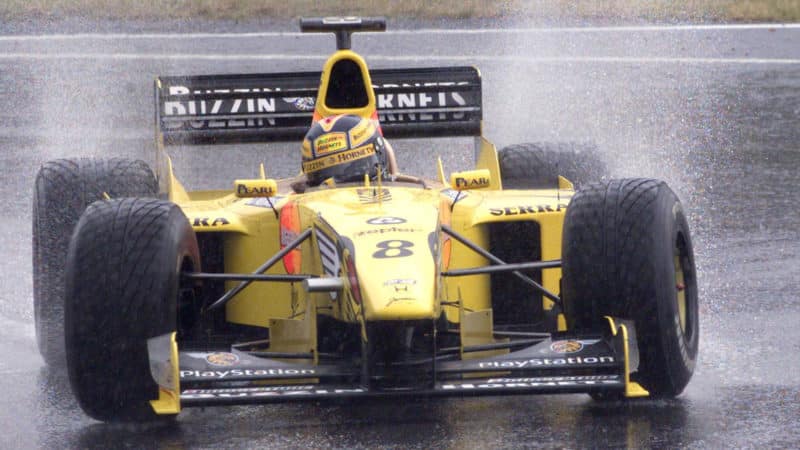
Brilliant Magny-Cours win ignited Jordan title challenge
Getty Images
“Montreal was a cock-up because we had bigger brake ducts and we didn’t run them,” says Gascoyne. “At this point we were really under pressure. Then to go to France and win the race was a big breakthrough.”
That’s some understatement. On a sensational soggy afternoon in France a canny performance from Frentzen and a bold tyre strategy earned Jordan a memorable victory.
“It was the first win for a car I’d designed,” adds Mike. “I’d been at Tyrrell, done a reasonable job and some fairly innovative things, but we were in the bottom half of the grid. I’d always had Harvey [Postlethwaite], and this was the first time I’d done it all from scratch. In fact, apart from Barcelona 1994, that year was the first time I’d had a car on the podium.”
Next time out at Silverstone Heinz finished fourth. But the real significance of that race was Schumacher breaking a leg. It seemed that the championship was now a contest between Irvine and Mika Häkkinen. While all eyes focused on these two, Frentzen subsequently picked up a string of thirds and fourths, leaving the struggling Hill in his wake.
